Automotive Treasures: Selections from the Joel E. Finn Collection
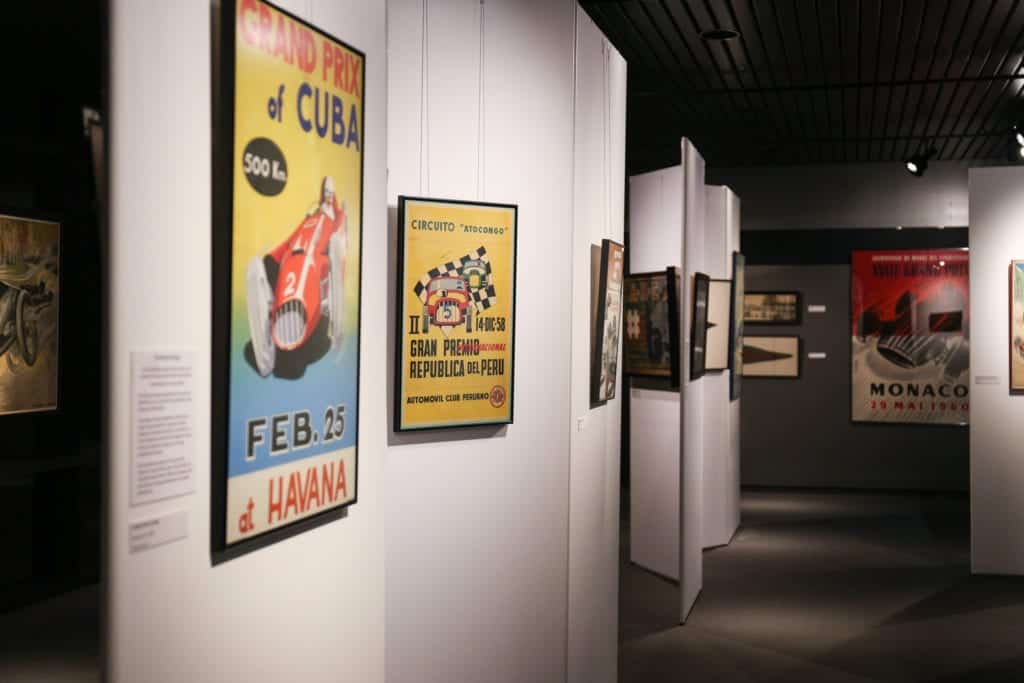
The automobile transformed the economic and social landscape of the 20th century, yet if you move beyond the volumes of car enthusiast publications stored at Revs Institute, the automobile and its relationship with society has received comparatively little academic study. A new exhibit at Revs entitled Automotive Treasures: Selections from the Joel E. Finn Collection, uses artifacts and automobilia to illustrate just how far-reaching the influence of the automobile really is. Posters, pennants and photographs that were once disposable now give us a lens through which to view the early 20th century and the transformative effect of the motorcar.
Joel E. Finn (1938-2017) is best known as an award-winning automotive historian and author, but he was also a man ahead of his time. Finn was quick to recognize the historical importance of the automobile, and he devoted his life to saving and collecting early automotive and racing artifacts, many of which might otherwise have been lost to history. His collection includes objects and ephemera that represent nearly every major racing event in motorsports history between 1899 and 2000. Some of those events are still familiar, while others have been buried in the sands of time.
In 2014, Revs Institute acquired the Joel E. Finn Collection directly from the Finn family, although few of the artifacts have been on public display until now. The selection of items in the exhibit includes significant pennants and race posters, some of Finn’s favorite items, and several photographs that show the breadth of the collection.
Here are a few notable examples from Automotive Treasures:
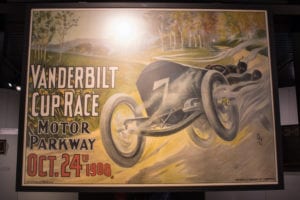
The Vanderbilt Cup races, held on Long Island, NY, between 1904 and 1916, introduced America to the allure of speed, competition, and the sense of danger that has always permeated the sport. The first of their kind in the US, the races were organized by William K. Vanderbilt Jr. to encourage innovation in the American auto industry. The events drew thousands of spectators and were widely reported on, giving many American manufacturers favorable publicity and a chance to test and improve their designs.
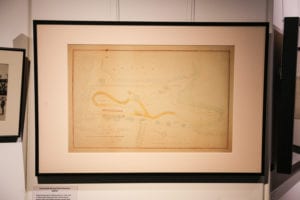
Another section of the exhibit features artifacts that illustrate the influence the Automobile Racing Club of America had on road racing in the United States. The Automobile Racing Club of America, otherwise known as ARCA, was founded in 1933 by Barron Jr., Sam and C. Miles Collier along with their friends Thomas Dewart, Allen and Langdon Quimby, George Rand, and Briggs Cunningham. ARCA’s goal was to bring the European style of Road Racing to the United States, where board track, dirt track, and Indy racing were already well established. Their efforts revived interest in amateur road racing in the America, and in 1940 they organized the legendary World’s Fair Grand Prix in New York.
One of the highlights in the ARCA section of the exhibit is a track map from 1934, which depicts a proposed racing track layout on the Alan Bemis Estate grounds in Wayland, Massachusetts. In the early years of ARCA it was common to host events at informal venues.
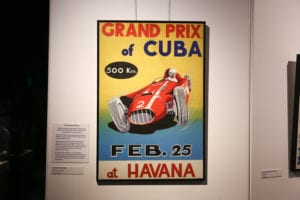
Another standout piece from the collection on display is this 1958 Cuban Grand Prix Poster. Even as a revolution was erupting on the island, the Cuban Grand Prix drew large crowds and famous drivers from the period like Juan Manuel Fangio, Stirling Moss, and Masten Gregory. Despite its popularity, the race was only held three times (1957, 1958, and 1960) and became a victim of political controversy and bad publicity after a horrific crash in 1958 that killed seven spectators.
Joel E. Finn’s book Caribbean Cappers: The Cuban Grand Prix Road Races of 1957, 1958, and 1960 documented these races in such great detail that the Society of Automotive Historians awarded him their Nicolas-Joseph Cugnot Award for Outstanding Book of 2011.
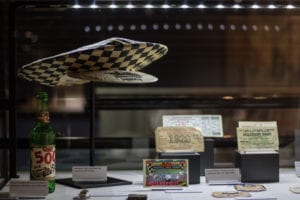
Finn was one of the country’s leading automotive historians and his diverse collection highlights areas throughout history where the automobile has influenced society and culture. The art and automobilia selected for display represent Finn’s life passion for automotive history and the significant role the automobile has played in our way of life. This exhibit serves as a tribute to both; we hope you enjoy it.
Revs Institute would like to thank Mrs. Ann Finn for her instrumental assistance in acquiring the Joel E. Finn Collection of Art and Automobilia. Without her dedicated efforts this exhibition would not have been possible.

